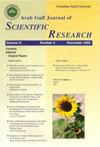The prevalence of potential side effects of COVID-19 vaccines among vaccinated Iraqi people: a prospective cross-sectional study
Q4 Business, Management and Accounting
引用次数: 0
Abstract
Purpose Several types of vaccines were manufactured by different companies to control and stop the spread of COVID-19. This study aimed to identify the postvaccination side effects of the three different vaccines (Pfizer, AstraZeneca and Sinopharm) among the Iraqi population in Baghdad, Iraq. Design/methodology/approach A prospective cross-sectional study was conducted in Baghdad, Iraq from May 2021 to March 2022. An online-based questionnaire was used to collect the data through social media, i.e. WhatsApp, Messenger and Google Classroom. A total of 737 vaccinated participants using a snowball sampling methodology were used in this study. Findings Among the study population, 328 (44.50%) were males and 409 (55.50%) were females. The highest age group that participated was 18–30 years (79.10%) followed by 31–40 years (12.10%), 41–50 years (4.20%), 51–60 years (2.40%) and 60 = years (2.20%). However, 58.8% of the participants received Pfizer-BioNTech, 23.7% received the AstraZeneca-Oxford vaccine and 17.5% received Sinopharm. Out of the total participants, 56.60% showed postvaccination side-effects such as fever, headache, fatigue and dizziness, while 33% showed no side-effects and 10.40% were not sure. Pfizer-BioNTech and AstraZeneca-Oxford vaccines were the most vaccines prevalent of side-effects. Originality/value The majority of the side reactions associated with the AstraZeneca and Pfizer vaccines were manageable and self-limiting, including fever, fatigue, headache, joint pain and dizziness, compared to the Sinopharm vaccines, which reported lower postside effects.在接种过疫苗的伊拉克人中,COVID-19疫苗潜在副作用的发生率:一项前瞻性横断面研究
为了控制和阻止COVID-19的传播,不同公司生产了几种类型的疫苗。本研究旨在确定三种不同疫苗(辉瑞、阿斯利康和国药)在伊拉克巴格达的伊拉克人口中的接种后副作用。设计/方法/方法一项前瞻性横断面研究于2021年5月至2022年3月在伊拉克巴格达进行。通过社交媒体WhatsApp, Messenger和Google Classroom进行在线调查问卷收集数据。本研究采用滚雪球抽样方法,共有737名接种疫苗的参与者。研究人群中男性328例(44.50%),女性409例(55.50%)。18 ~ 30岁是参与人数最多的年龄段(79.10%),其次是31 ~ 40岁(12.10%)、41 ~ 50岁(4.20%)、51 ~ 60岁(2.40%)和60岁(2.20%)。然而,58.8%的参与者接种了辉瑞- biontech疫苗,23.7%的人接种了阿斯利康-牛津疫苗,17.5%的人接种了国药。在所有参与者中,56.60%的人出现了疫苗接种后的副作用,如发烧、头痛、疲劳和头晕,33%的人没有副作用,10.40%的人不确定。辉瑞- biontech和阿斯利康-牛津疫苗是副作用最普遍的疫苗。阿斯利康和辉瑞疫苗的大多数副作用是可控的和自限性的,包括发烧、疲劳、头痛、关节痛和头晕,而国药控股的疫苗副作用较低。
本文章由计算机程序翻译,如有差异,请以英文原文为准。
求助全文
约1分钟内获得全文
求助全文
来源期刊

Arab Gulf Journal of Scientific Research
综合性期刊-综合性期刊
CiteScore
1.00
自引率
0.00%
发文量
0
审稿时长
>12 weeks
期刊介绍:
Information not localized
 求助内容:
求助内容: 应助结果提醒方式:
应助结果提醒方式:


